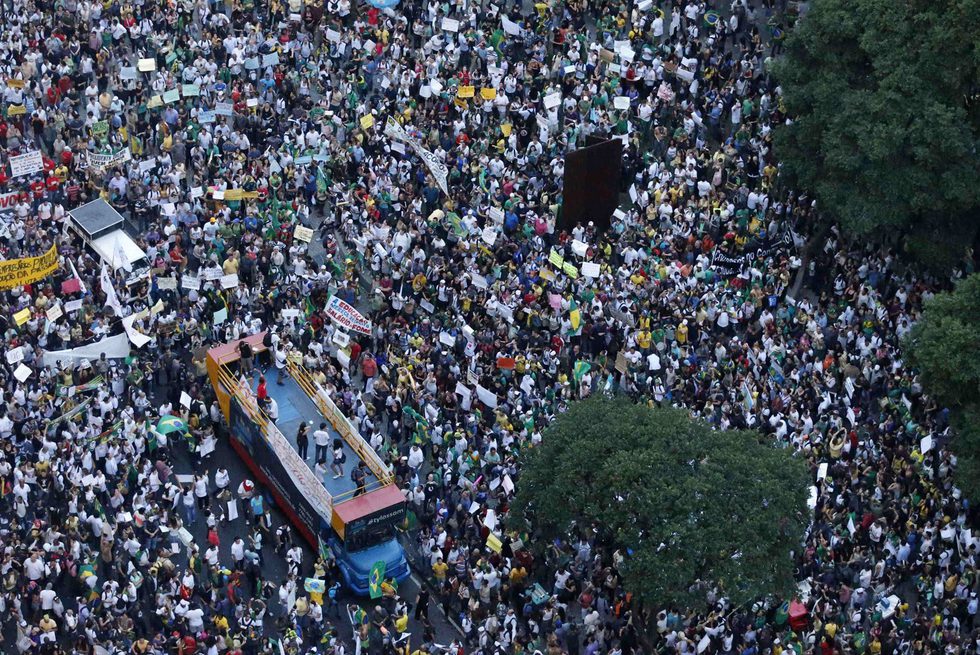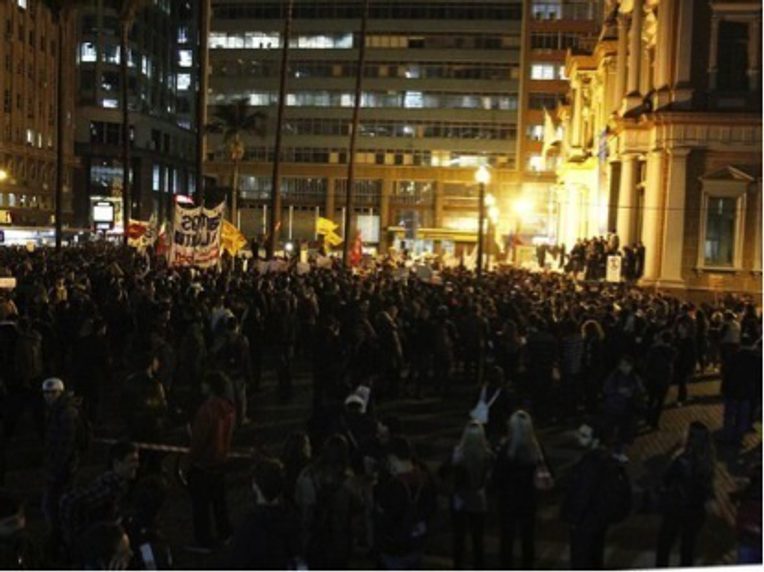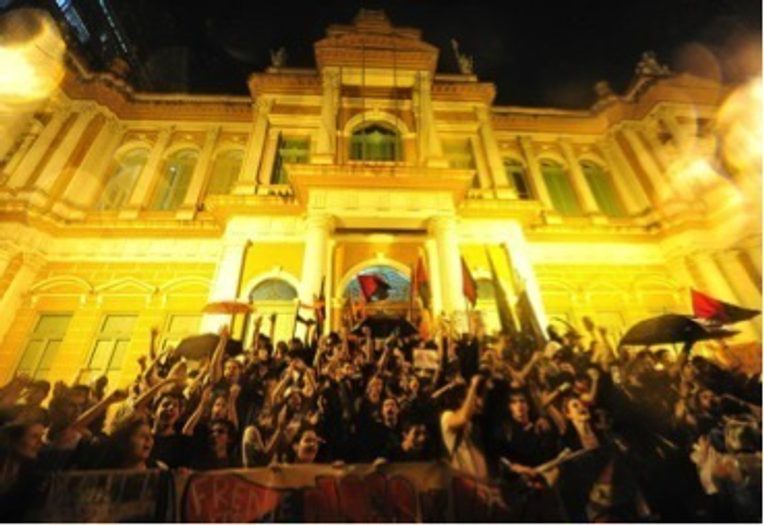Taking to the Streets of Brazil
From the Series: Protesting Democracy in Brazil
From the Series: Protesting Democracy in Brazil

In recent years, some have said that Brazil was booming. The GDP was rising and Lula’s government instituted a series of measures that closed the tremendous income gap that had always characterized the country. Encouraged, the government announced that, in the future, the country would be predominantly middle class. The Federal Supreme Court finally judged and convicted politicians involved in a wide-ranging corruption scheme. The country was excited about hosting the 2014 FIFA World Cup and 2016 Olympic Games. And on the international stage, Brazil was slowly becoming a global player. Everything seemed to be going well until the country was shaken by a series of demonstrations and street protests that caught everyone by surprise.
It all began with protests against a rise in bus fares in some state capitals. Transportation is a clear social divider in Brazil. Cars are expensive and those who own one feel they are part of the elite, meaning that they take priority over pedestrians, who are not respected at crosswalks. Those without a car must use public transportation. Only São Paulo and Rio de Janeiro have underground subway systems, which cover a small portion of these cities. The rest of the population is forced to use buses that are typically overcrowded and unreliable. The private bus companies that run these lines charge high prices and refuse to disclose their operating costs.
What initially arose as a protest against fare increases rapidly evolved into a demand for a “free pass.” The initial response by governments was to freeze bus fares. However, this did nothing to calm the protests, which grew to an impressive scale. Via social networks, protests began to spring up in several cities, taking over city centers. The police force, unprepared to deal with this type of demonstration under democratic regimes, used tear gas and rubber bullets, which only served to increase the movement. The mass of protestors brandished the slogan “peaceful demonstrations without violence,” but were attacked by the police anyway. At the end of the protests, groups of masked “thugs” would break or set fire to everything in their paths and sometimes loot stores. By the time these looters took to the streets, the demonstrations had already dispersed and the police had returned to their barracks.
At this stage, demands that had initially centered on fare increases expanded: more funding for education and healthcare, a halt to spending on massive construction projects for the FIFA World Cup and the Olympic Games, greater transparency in public spending, the end of corruption, gay rights, etc. When militants from political parties attempted to infiltrate the marches waving party flags, they were expelled. The same occurred with journalists from mainstream media who were forced to resort to helicopters to film the events and rely on videos sent by participants.
The last mass protests had occurred in 1992 during the process that led to the impeachment of President Collor. As Brazil now seemed to be going in the right direction the country was stunned. After several days, President Rousseff realized the protests had taken on national proportions and was obliged to make a public statement on television. Having herself been a left-wing activist and guerilla who was arrested and tortured during military dictatorship (1964–1985), she obviously could not condemn the demonstrations. Instead she stated that the protests by the country’s youth were legitimate demonstrations and the government should listen to their demands, but that acts of vandalism could not be tolerated.
What do these movements teach us? First, they suggest that a portion of the population represented by young people—members of a group with access to more consumer goods than their parents had—now wants something more. Second, these protests show that these young people do not trust the formal organizations of a representative democracy: government, political parties, mainstream media. Third, the Worker’s Party, in power since 2003, is no longer the opposition, but “the government”—a government obliged to make broad-ranging political agreements to achieve a majority in congress. Fourth, mainstream media can no longer control information, in part because social media is highly efficient at divulging what does not appear in newspapers and on television; this media helps to mobilize youth to protest. Fifth, Brazil has become highly diversified, with the increasing emergence of new social players who build new identities and demand recognition and specific rights. Sixth, these movements do not have the organizational framework that we might expect for groups that submit “demands.” Seventh, as Brazilians becomes more equal and educated, there is a myriad of young people making claims and, as soon as they have the opportunity, they voice their demands.
Just as no one foresaw the events of June, it is equally difficult to know how things will evolve. Naturally, political parties concerned over national and state elections in October 2014 will attempt to win over some of the youth factions. But the youth are now far more difficult to fool. They have shown the country and the world that politicians are far less concerned about the nation than they are about their won positions and personal gain, and that most should not be trusted. On the other hand, their spontaneous and anarchical organization leads many analysts to believe that the movement will dissipate over time and everything will be as before. Yet it is certain that a number of things will remain: the idea that the young can creatively organize themselves and cannot be deceived, an emerging consensus that the Brazilian political model is expiring and needs to be reformed, the notion that Brazil is a highly complex country with a wide variety of players whose rights must be respected and, above all, the dream that a different Brazil is possible—a country in which citizenship is a reality and not merely something that gets cited in speeches and laws.

